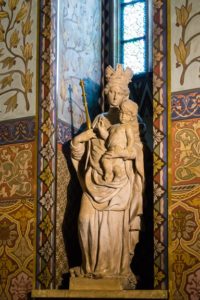By Debi Lander
mail@floridanewsline.com
Budapest, Hungary and Jacksonville have something in common: rivers divide both cities. The St. Johns cuts through downtown Jacksonville and the mighty Danube separates the landscape of Budapest. In this Hungarian city, one bank is called Buda and the other Pest.
Budapest struggled during both World Wars and was under communist control until 1989. Hence, the residents continue efforts to catch up with Western advances limited during the communist years.
The Pearl of the Danube offers tourists fabulous opportunities at inexpensive rates, especially when compared with other European capitals. The food is outstanding (sausages, goulash, stuffed cabbage, chicken paprikash, duck, veal and strudel), public transportation is easy to use and music fills the air.
Parliament is the most important building — started in 1885, inaugurated on the 1000th anniversary of the country in 1896 and completed in 1904. About one thousand people were involved in the construction using 40 million bricks and half a million precious stones. During the communist regime a red star perched on the top of the dome, but was removed in 1990. The new president declared Hungarian independence from the balcony on October 23, 1989. Today the government uses only a small portion of the building.
The architecture of the immense structure (879 feet long, 404 feet wide, 315 feet height) is breathtakingly beautiful. The building’s pinnacles look stunning when illuminated at night. I took a one-hour Danube cruise just to see Parliament shimmer and glow at twilight; however, don’t miss the exquisitely painted chambers and halls on the interior. The 16-sided central domed chamber showcases the former crown jewels, a showstopper.
The Mathias Church stands on Castle Hill, a 700-year-old Gothic exterior with an astonishing interior of swirling color and stenciled designs. The heavily adorned church acted as a coronation site for centuries including the last two Hapsburg kings. One chapel holds a beloved statue of a Madonna and child that was plastered over to protect it from the Ottomans. In 1686, it reappeared during canon fire and collapse of a wall. This appearance scared the enemy and they fled allowing the Christian army to recapture the city. The miraculous victory is attributed to her.
Nearby stands the Fisherman’s Bastion, (also on the Buda side) a decorative construction of seven white stucco towers that offer some of the best city vistas. Climb a series of walkways to patios or overlooks for drinks or meals and to bask in the panoramic scene.
Other sites of interest are the Dohány Street Synagogue, the most beautiful and the second largest synagogue in the world. Behind it stands a Memorial Garden, an emotional tribute to the thousands of Jewish residents sent to Nazi prison camps and gas chambers.
St. Stephen’s Basilica, a Vatican-like display of Baroque design, dominates the skyline on the Pest side. Nearby rests the Hungarian State Opera House, a must-see for anyone interested in music or theater.
Thermal baths, ever popular with Hungarians, attract Budapest visitors. Pick from a multitude of bathing options around the city. I chose the Gellert Baths, a historical complex of pools, tubs, saunas and steam rooms and afterward felt sensational without a massage or treatment. Take your bathing suit and soak like a Hungarian in the therapeutic warm water.
Although you cannot fly directly to Budapest from the U.S., air and rail connections from European cities are readily available.
Visit www.bylandersea.com to read more of local travel writer Debi Lander’s stories and travel tips.
Photos courtesy Debi Lander.
Parliament at twilight
 Statue of Madonna in Mathias Church
Statue of Madonna in Mathias Church











